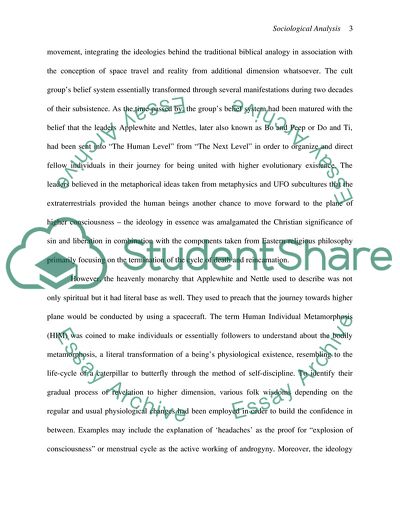Cite this document
(A Sociological Analysis of Heavens Gates Belief System, Methods of Coursework, n.d.)
A Sociological Analysis of Heavens Gates Belief System, Methods of Coursework. Retrieved from https://studentshare.org/sociology/1707281-using-a-religious-cult-or-sect-of-your-choice-provide-a-sociological-analysis-of-their-belief-systems-methods-of-organization-and-impact-on-wider-society-and
A Sociological Analysis of Heavens Gates Belief System, Methods of Coursework. Retrieved from https://studentshare.org/sociology/1707281-using-a-religious-cult-or-sect-of-your-choice-provide-a-sociological-analysis-of-their-belief-systems-methods-of-organization-and-impact-on-wider-society-and
(A Sociological Analysis of Heavens Gates Belief System, Methods of Coursework)
A Sociological Analysis of Heavens Gates Belief System, Methods of Coursework. https://studentshare.org/sociology/1707281-using-a-religious-cult-or-sect-of-your-choice-provide-a-sociological-analysis-of-their-belief-systems-methods-of-organization-and-impact-on-wider-society-and.
A Sociological Analysis of Heavens Gates Belief System, Methods of Coursework. https://studentshare.org/sociology/1707281-using-a-religious-cult-or-sect-of-your-choice-provide-a-sociological-analysis-of-their-belief-systems-methods-of-organization-and-impact-on-wider-society-and.
“A Sociological Analysis of Heavens Gates Belief System, Methods of Coursework”. https://studentshare.org/sociology/1707281-using-a-religious-cult-or-sect-of-your-choice-provide-a-sociological-analysis-of-their-belief-systems-methods-of-organization-and-impact-on-wider-society-and.


